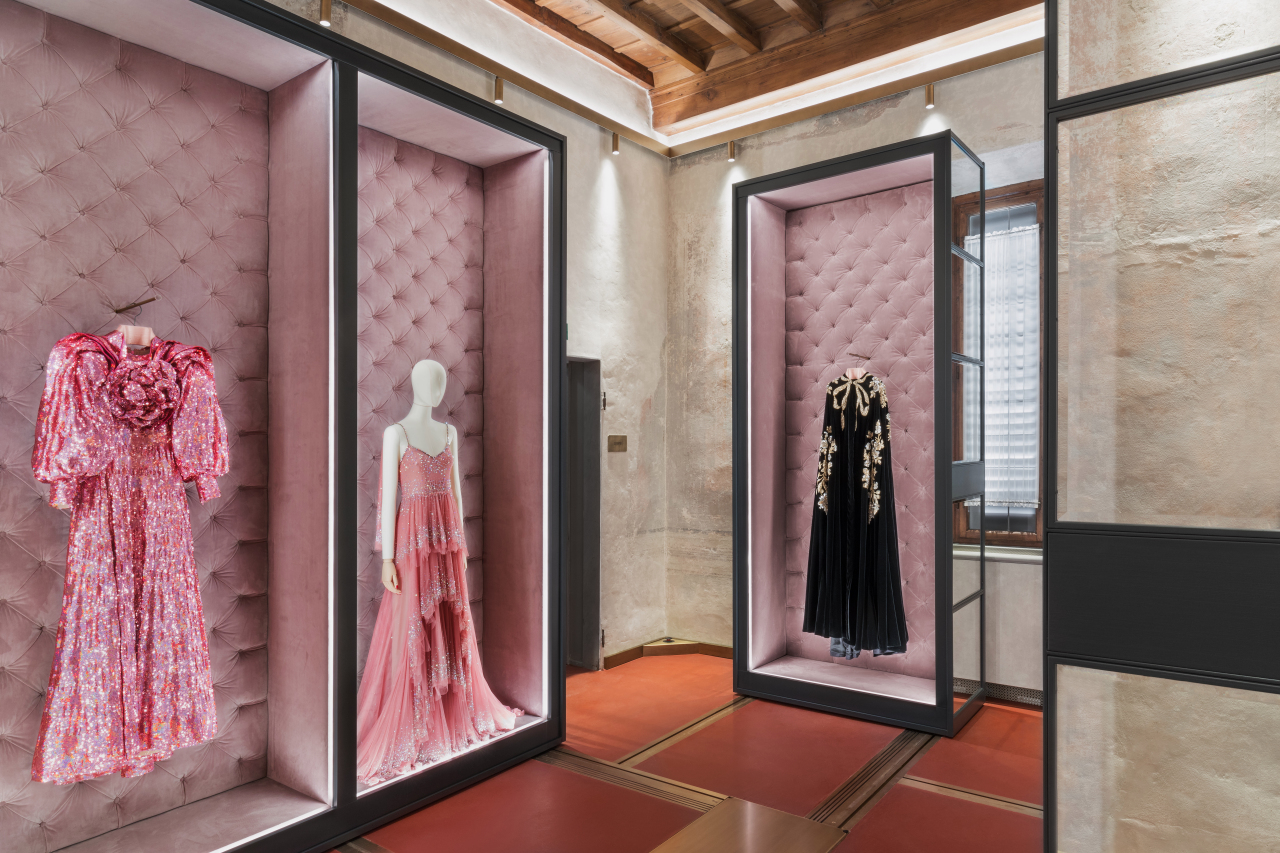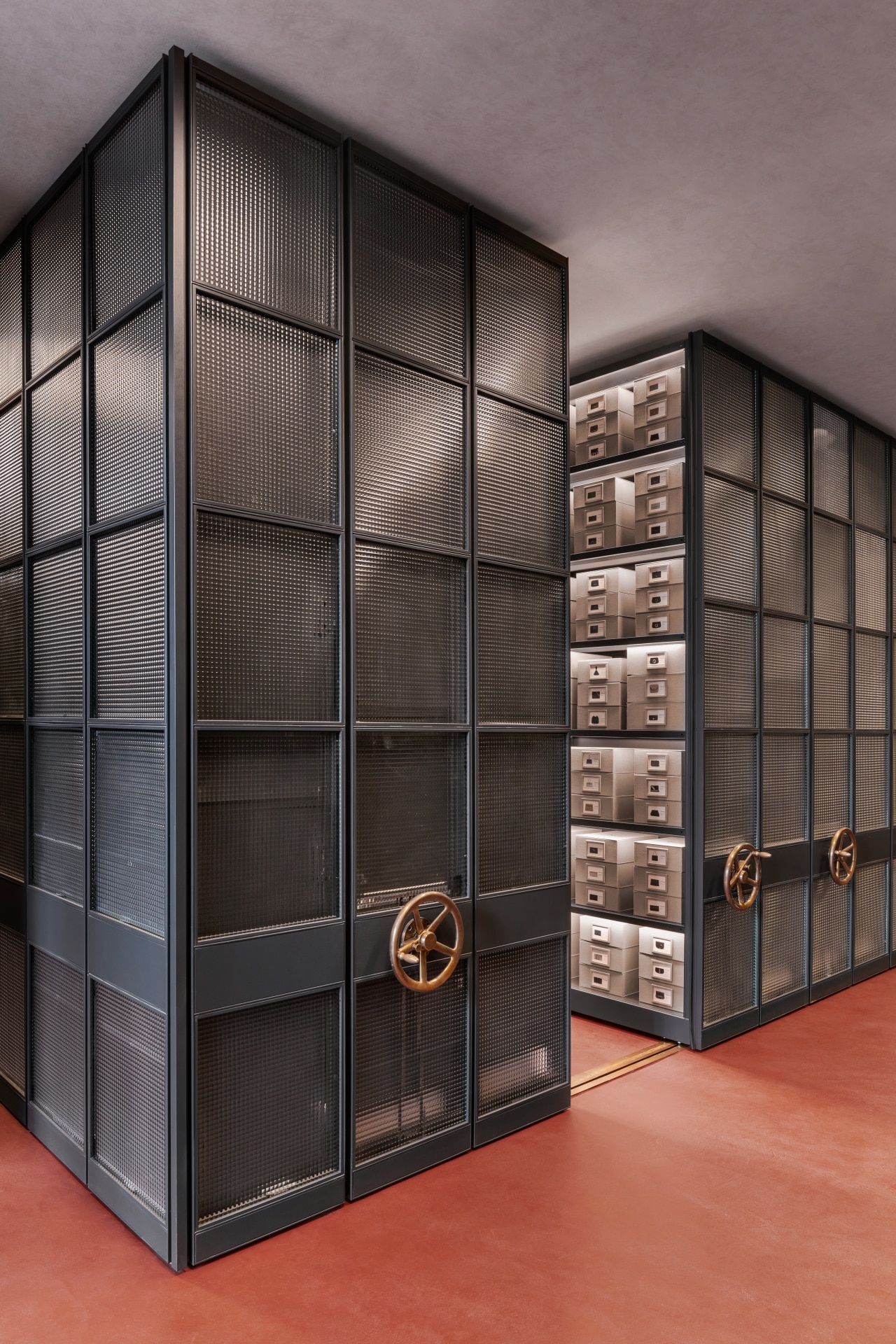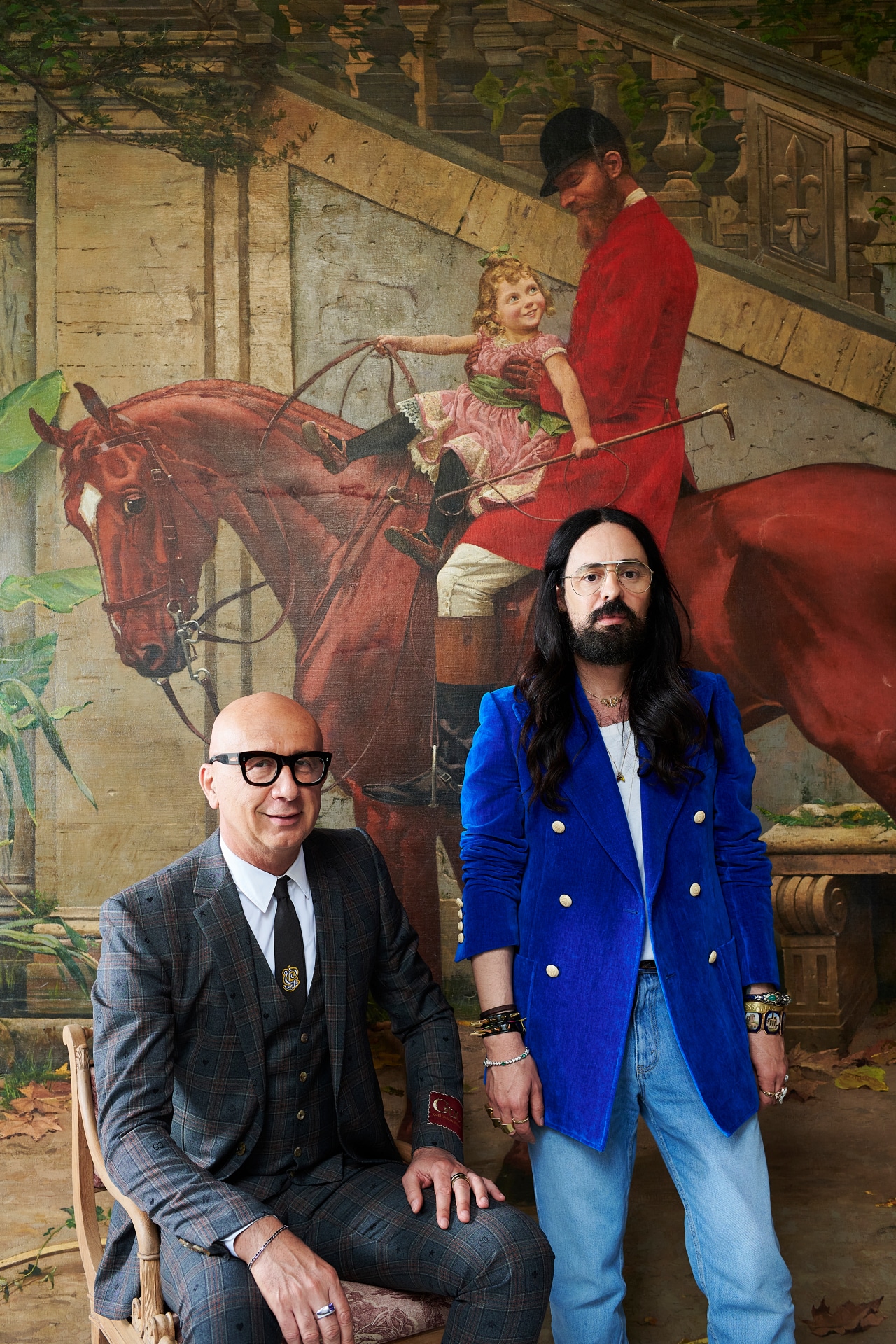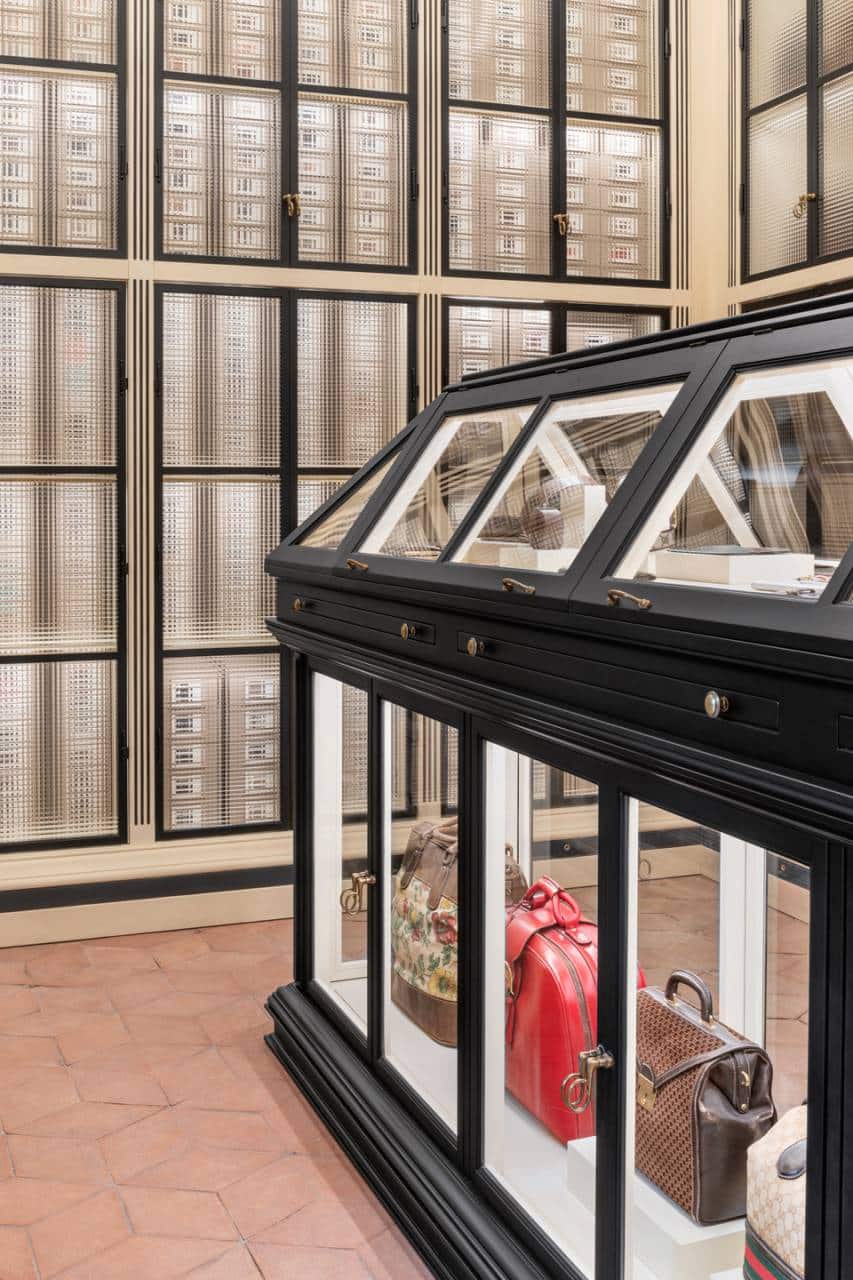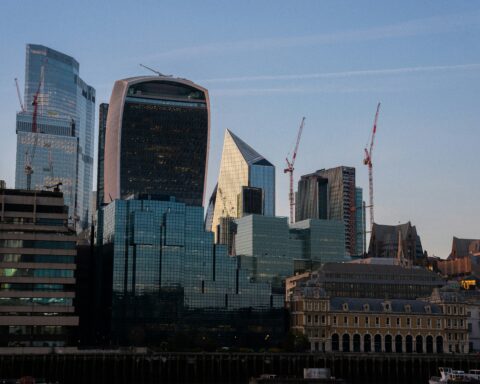To celebrate its centenary, Gucci is unveiling a new archive in Florence. Housed in the Palazzo Settimanni, the label’s former headquarters, these documents trace the history of the Italian house.
In partnership with Pitti Uomo, Gucci reveals exclusive archives in a 30,138 square foot space designed by creative director Alessandro Michele. The Palazzo Settimanni hosts Gucci creations and archival pieces to pay tribute to 100 years of history.
In the Santo Spirito neighborhood, the Palazzo Settimanni, acquired by Gucci in 1953, is located on the cobblestone Via delle Caldaie. The five-story building (including a ground floor and a basement) is decorated with frescoes and murals created over three centuries, from the 17th to the 19th.
Gucci used local artisans to create the terracotta tiles, which can be found on several floors. Each room was renovated and decorated down to the last detail, as with the door handles, molded in the shape of scissors, to enclose these precious archives.
“The Palazzo Settimanni, now free of previous additions, is transformed into a magical place to which I have restored a sense of porosity: you pass through it, the air enters, you can walk through it as if it were a journey. I have given the palazzo a fairy-tale aura that allows, for example, the small entrance hall to become a gateway to a dreamlike dimension. I envisioned it as a kind of secret place inside the house, an inner sanctum from which one leaves for the sacred lands of Gucci,” said Alessandro Michele, the brand’s creative director.
The Italian label Gucci enlisted the help of Valerie Steele, chief curator and museum director at the Fashion Institute of Technology, to best preserve these historic documents as they are and to offer expert design advice.
“The archive is a memory palace,” she said. “Far from being a dusty attic, it is a dynamic system of knowledge production and inspiration. (…) This relationship to time means that a brand like Gucci, which has a 100-year history, develops an archive to keep a tangible cultural heritage alive, now and for the future.”
In Palazzo Settimanni, each piece is organized around a specific theme dear to the house, chosen from Alessandro Michele’s lexicon. For example, “Radura”, which includes ceramics and household items, “Herbarium”, and the “House of Love” coexist with the “Swan” room on the ground floor.
Read also > THE MOST BEAUTIFUL MUSEUM ARCHITECTURES
Featured photo : © Press




